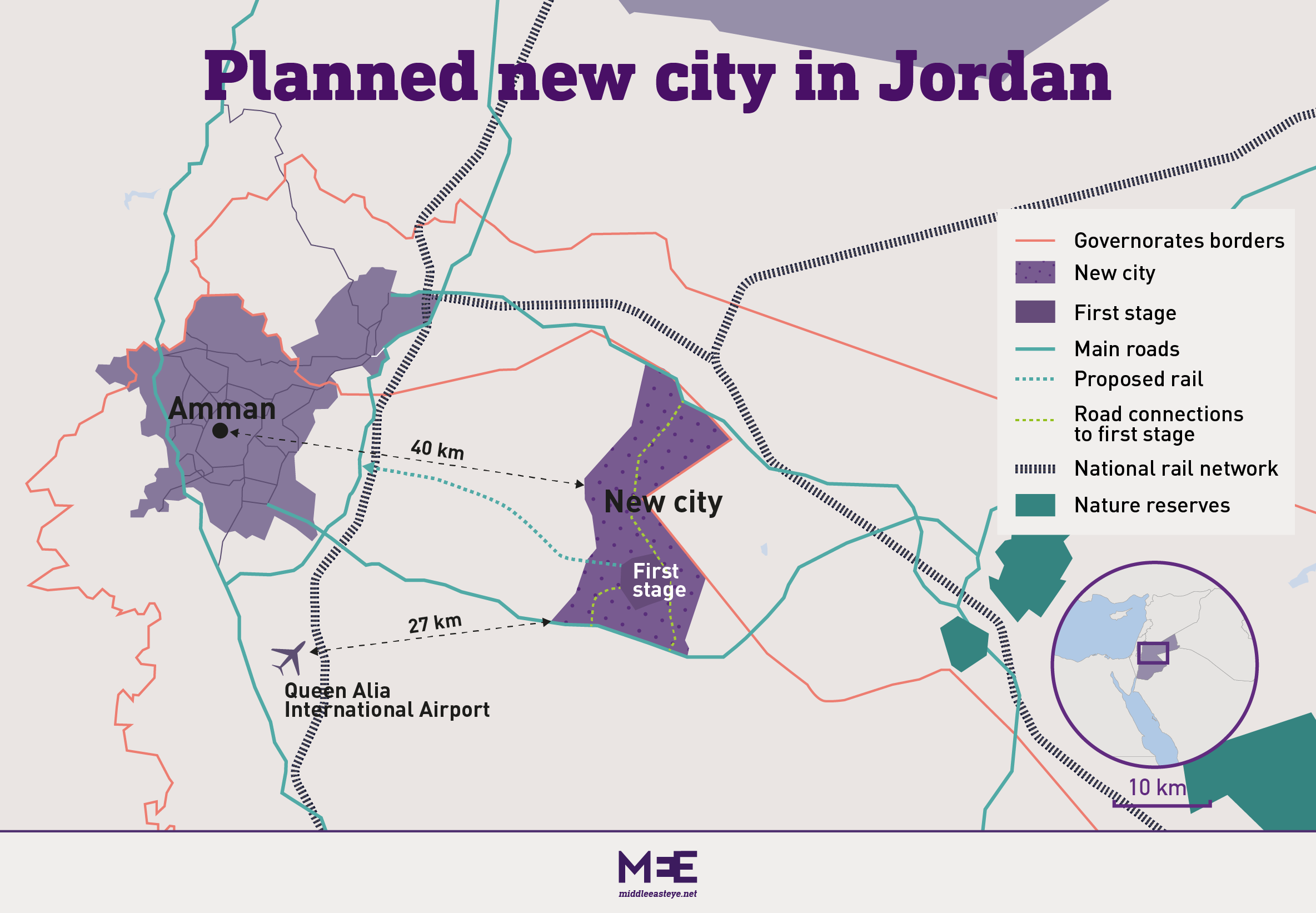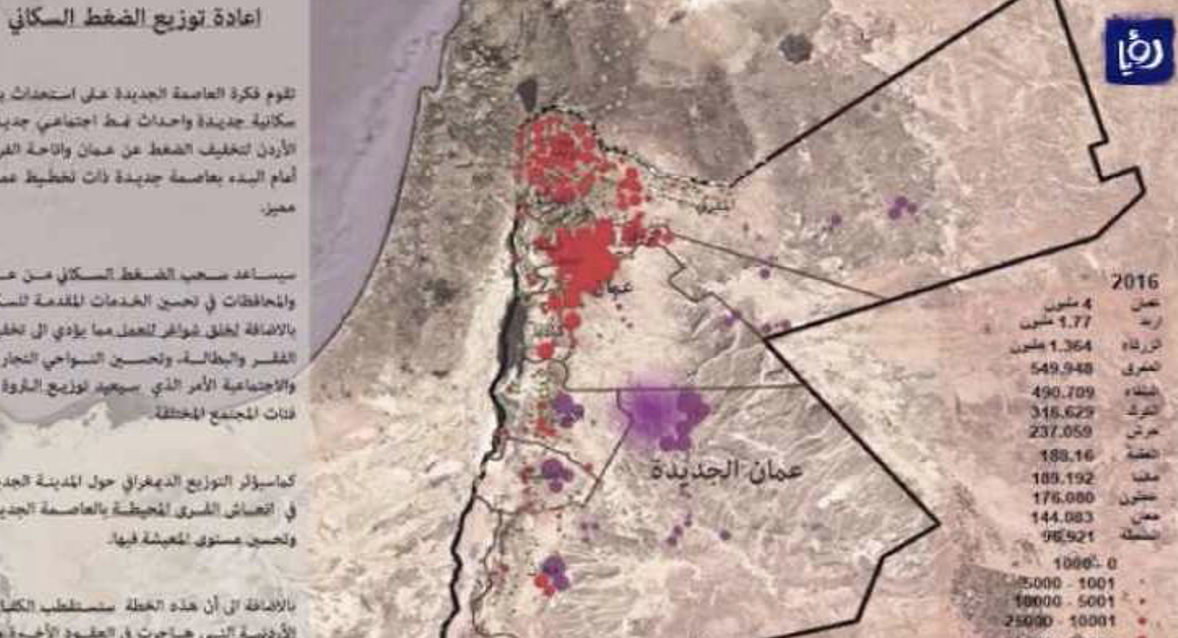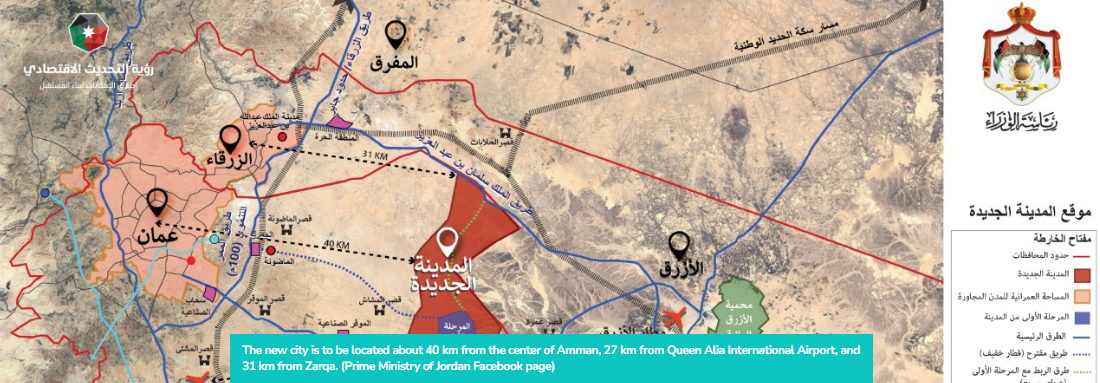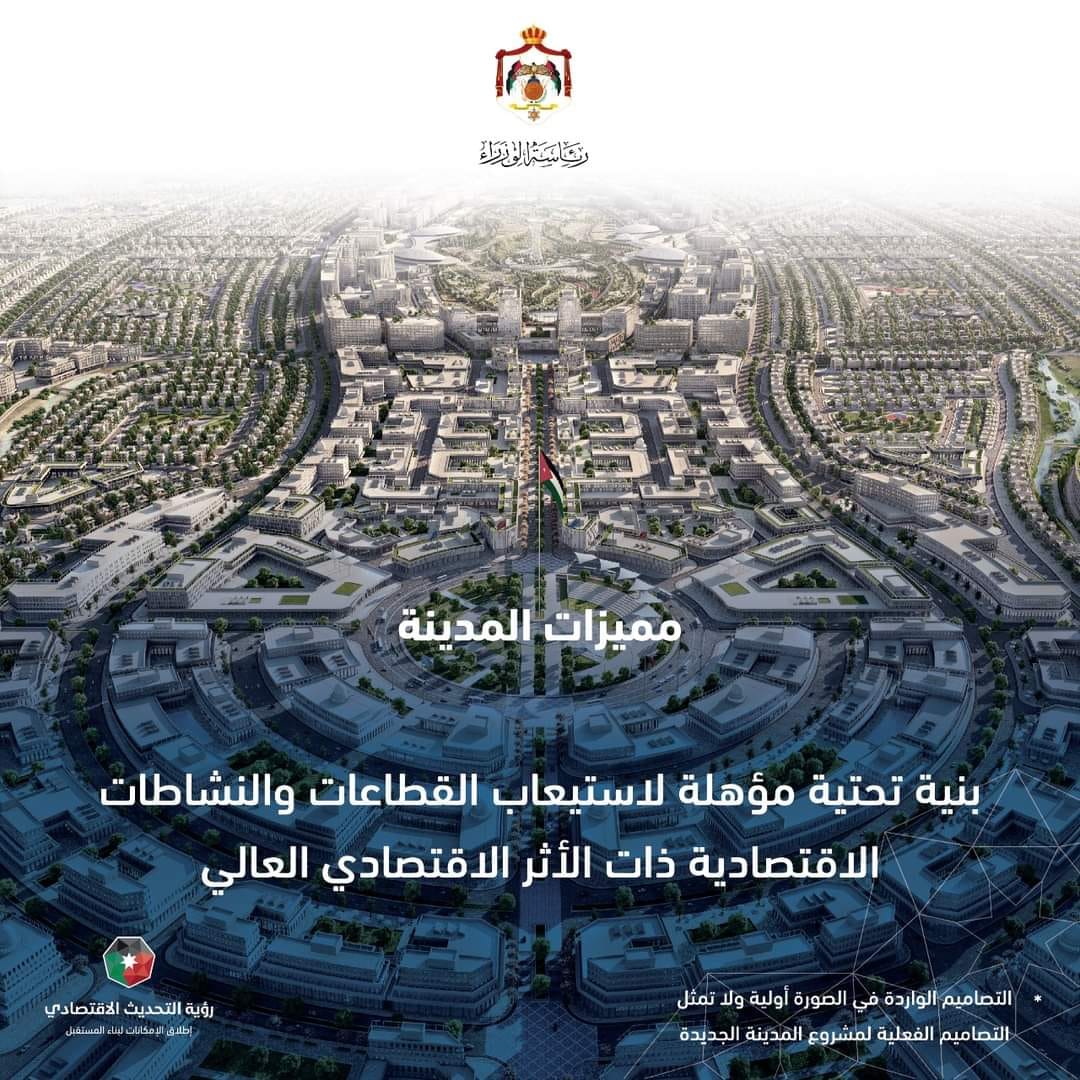
Close

Approach Words: Integrated City, Smart City, Sustainability
Public Policy Instruments: Financial Mechanism, Organization, Physical Intervention, Planning
Amman New Administrative City Project is a national mega project in Jordan.1 The proposed new city is located approximately 40 kilometers from Amman’s center and 31 kilometers from Zarqa,2 at a crossroad linking Jordan with Saudi Arabia and Iraq.3 As part of Jordan’s national economic revival plan of Jordani, the project envisions to “create a sustainable and modern urban center”.4

Title: Map Showing the New City Location
Source: Click Here

Title: Population Redistribution Plan Through the New City Project
Source: Click Here

Title: Map Showing the Road network linking the new city to Amman and Zarqa.
Source: Click Here

Title: 3D View Showing the Primarily Design of the New City.
Source: Click Here
To implement the project’s objectives, a master plan was proposed on state-owned land,8 measuring 266 square kilometers9 for a dynamic and well-integrated city10 to accommodate a population of 1 million.11 Key components of the project include:12 13
The project emphasizes sustainable urban planning approach, incorporating water and energy conservation strategies, as well as advanced transportation systems, making the city eco-friendly and appealing to residents.14

Owner/Developer (Public)

Consultant/Designer

Contractor/Implementer
The project is initiated by the Government of Jordan15 and its master plan is developed by the consulting firm, Dar Al-Handasah.16 It will be implemented under a Build-Operate-Transfer (BOT) model.17 With an estimated total cost exceeding $ 11 billion,18 funded by the government in partnership with the Jordanian private sector and foreign investors.19 The government has allocated approximately $623 million for 10 years for infrastructure,20 investing $70 million annually starting in 2025.21 The project is expected to be completed by 2050.22
The first phase of the implementation is expected to start in 202523 and end in 2033,24 and will accommodate approximately 157,000 residents.25 Government buildings are scheduled for completion in 2028, after which they will be transferred.26 By 2033, the project is estimated to generate approximately 83,000 jobs, with an additional 90,000 to 100,000 direct and indirect jobs generated by its final stage.27
Project Link
https://www.facebook.com/profile.php?id=100089625543298&locale=hi_IN
Endnotes
N.A.
References